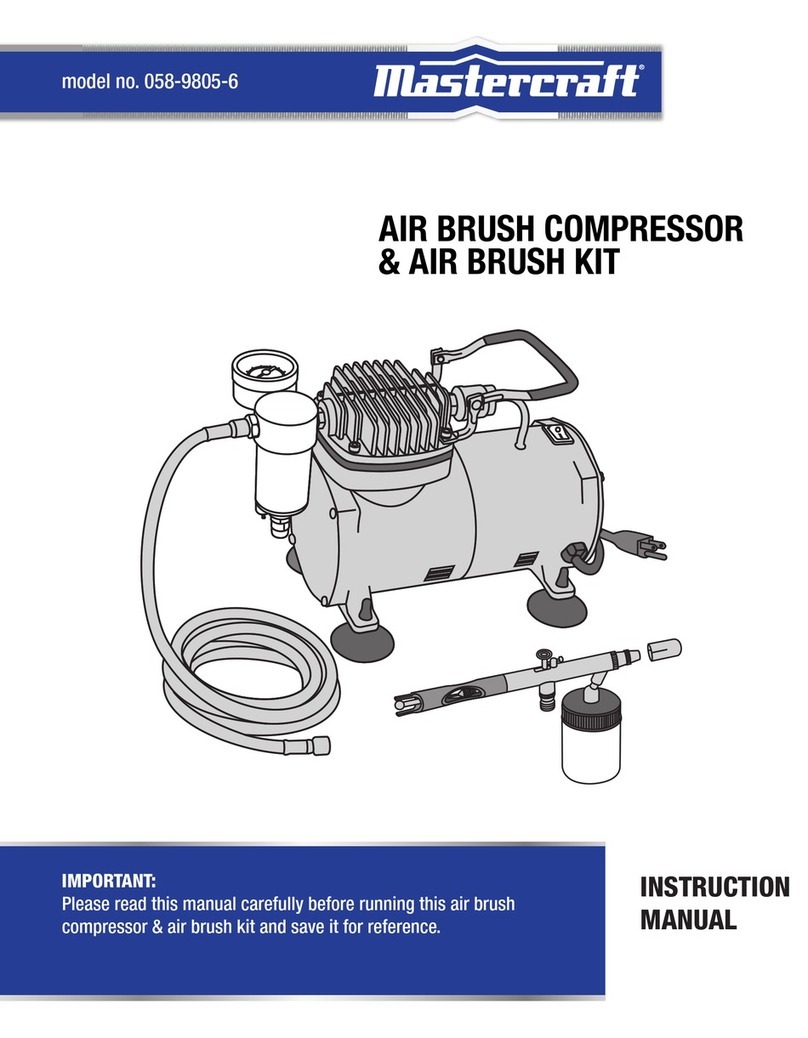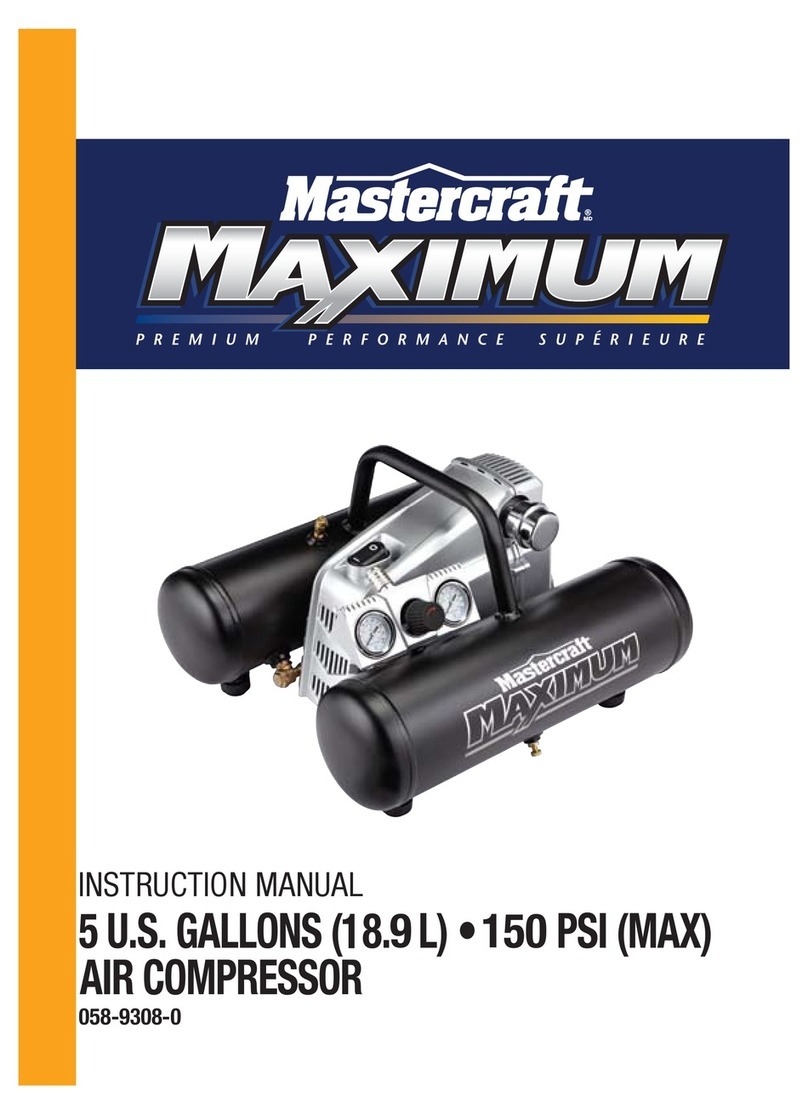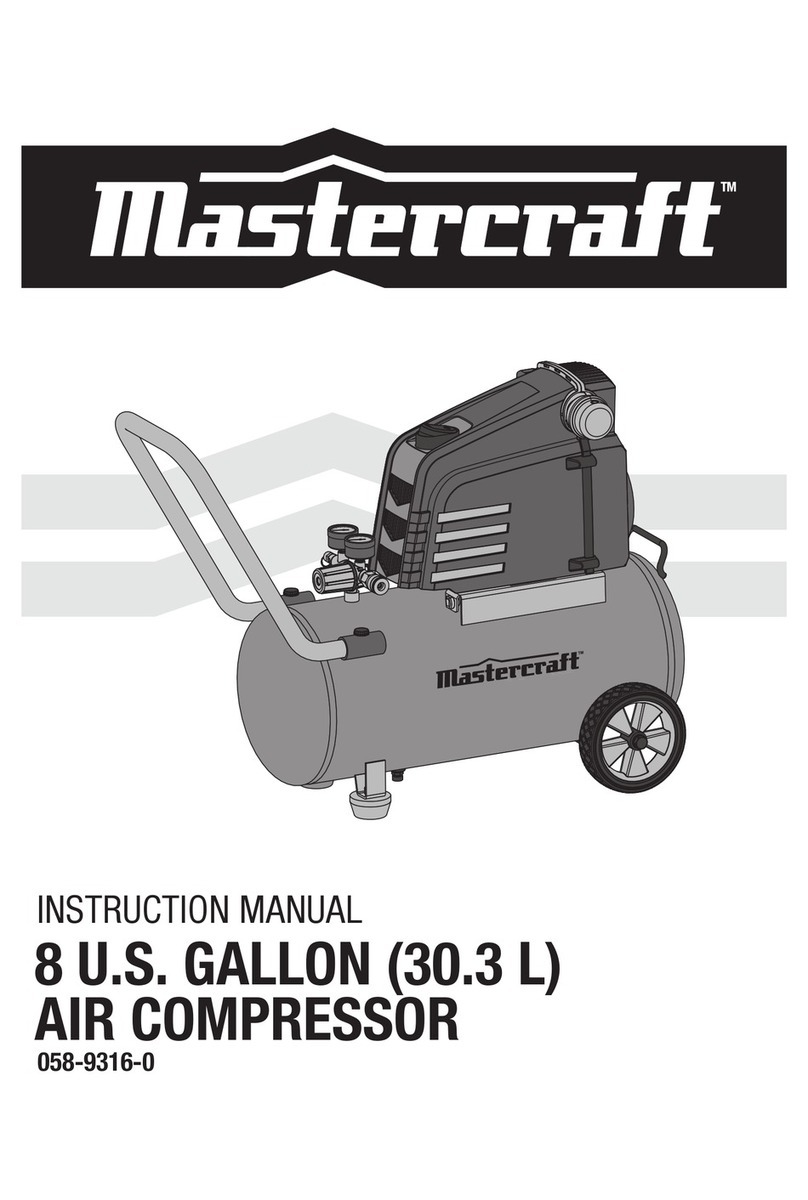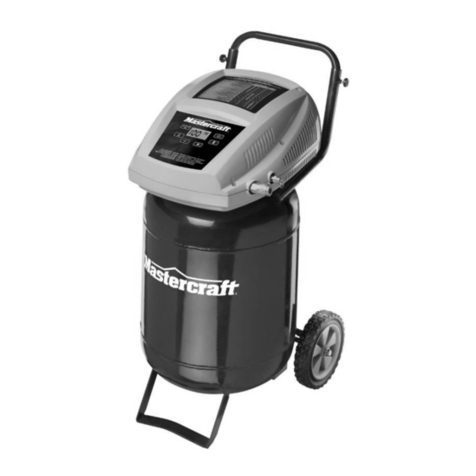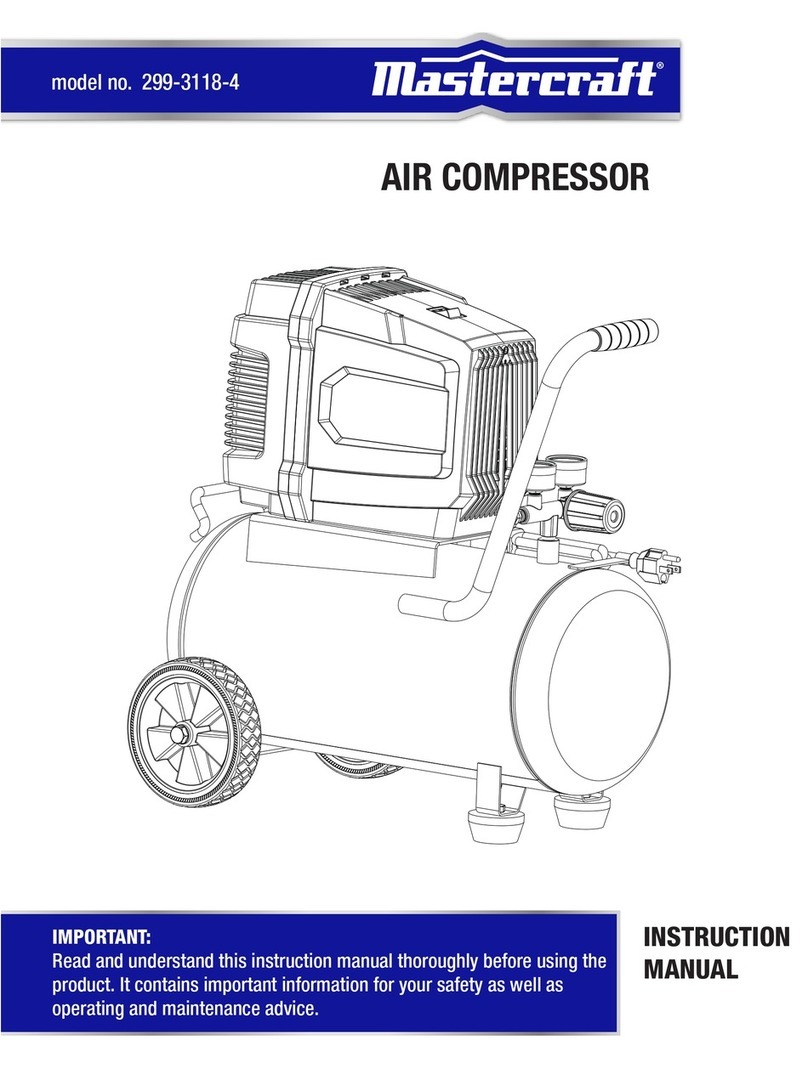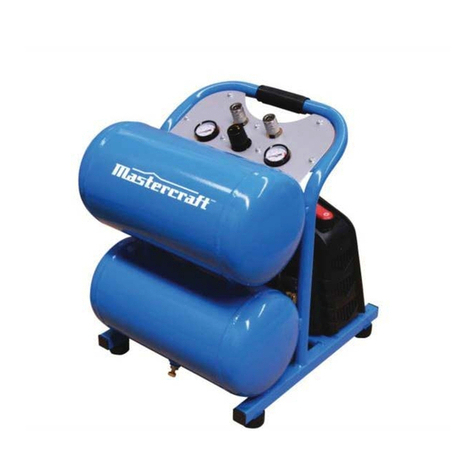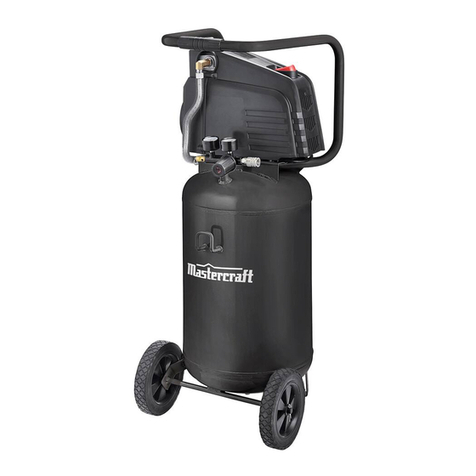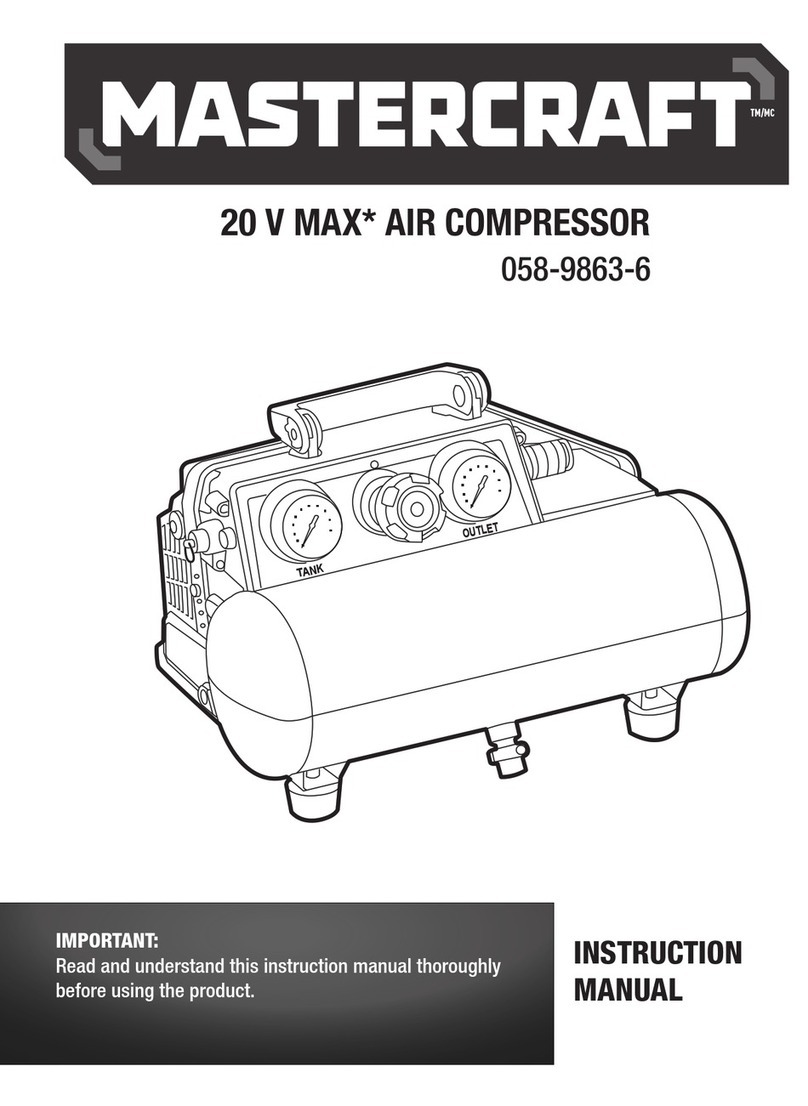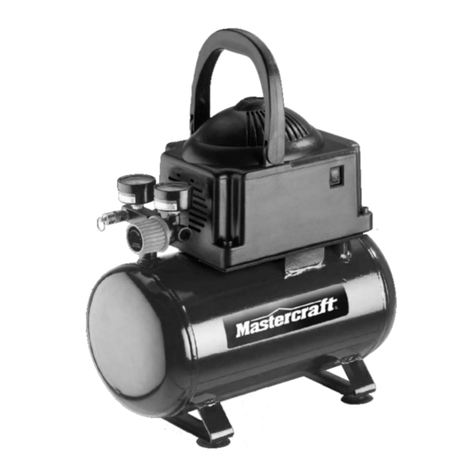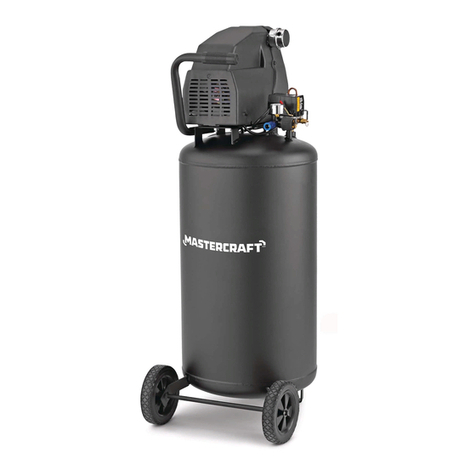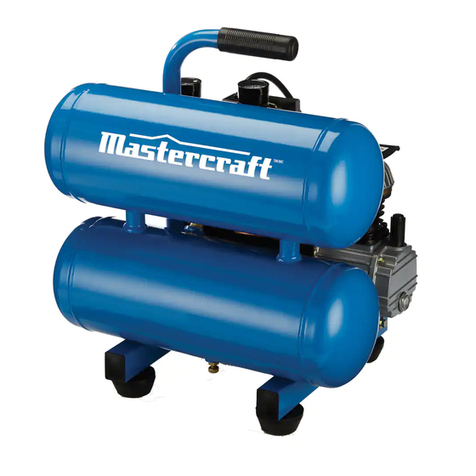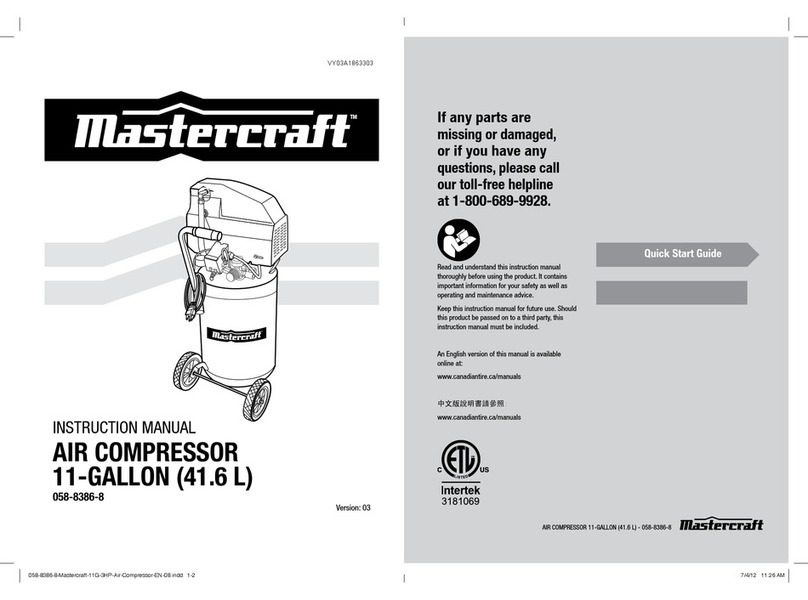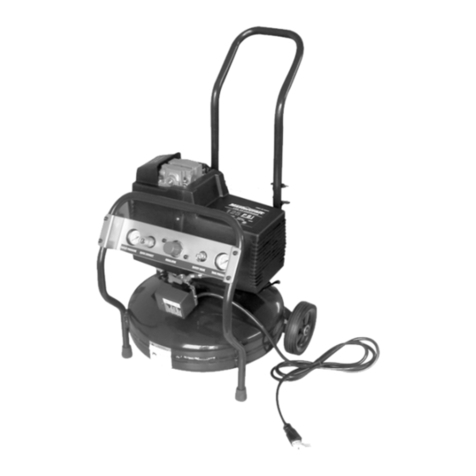
9
TROUBLESHOOTING
NOTE: Several problems may have similar causes and solutions.
PROBLEM POSSIBLE CAUSE SOLUTION
The motor will
not run or start
The power cord is not plugged in Plug the power cord into a grounded outlet.
The pressure switch is in the “OFF”
position Turn the switch to the “ON” position
The extension cord is the wrong wire
gauge or is too long Check chart on page 2 for the proper wire gauge and
cord length
The motor’s thermal overload
protection has tripped Turn the air compressor off, wait until the motor has
cooled down, and then check the motor’s circuit breaker
A fuse has blown or a circuit breaker
has been tripped
-Replace the fuse or reset the circuit breaker
-Verify that the fuse has the proper amperage
-Check for low voltage conditions
-Disconnect any other electrical appliances from the
circuit, or operate the compressor on a dedicated circuit
The air tank pressure exceeds the
preset pressure switch limit The motor will start automatically when the tank pressure
drops below the cut-in pressure.
The check valve is stuck open Remove the check valve and clean it or replace it.
Electrical connections are loose Have the compressor serviced by a qualified
professional.
The motor, capacitor, or check valve
is defective Have the compressor serviced by a qualified
professional.
The motor runs
continuously
when the
Start/Stop
option is
activated
The pressure switch does not shut off
the motor when the air compressor
reaches the cut-out pressure and the
safety relief valve activates
Move the pressure switch to the OFF position. If the
motor does not shut off, unplug the air compressor. If the
electrical contacts are welded together, replace the
pressure switch.
The compressor is not large enough
Check the air requirement of the accessory that is being
used. If it is higher than the CFM and the pressure
supplied by compressor, a larger compressor is needed.
Most accessories are rated at 25% of actual CFM while
running continuously.
The regulator
does not
regulate the
pressure
The regulator or its internal parts are
dirty or damaged. Replace the regulator.
The pressure is
low, or there is
not enough air
There is a leak at one of the fittings Check the fittings with soapy water. Tighten or reseal
leaking fittings. Do not over-tighten.
The tank drain valve is open Close the drain valve
The air intake is restricted Clean or replace the air filter element.
Prolonged excessive use of air Decrease the amount of air used.
There is a hole in the air hose Check the air hose, and replace it if necessary.
The tank leaks Replace the tank Immediately. Do not attempt to repair it.
The valve is leaking Check for worn parts, and replace them if necessary.
There is
moisture in the
discharge air
There is condensation in air tank
caused by a high level of atmospheric
humidity or because the air
compressor has not been running
long enough.
Drain the air tank after each use. Drain the air tank more
often in humid weather, and use an air line filter.
The compressor
overheats
The ventilation is inadequate Relocate the compressor to an area with cool, dry, and
well-circulated air.
Cooling surfaces are dirty Clean all cooling surfaces on the pump and the motor
thoroughly.
The valve is leaking Replace worn parts and reassemble using new seals.
